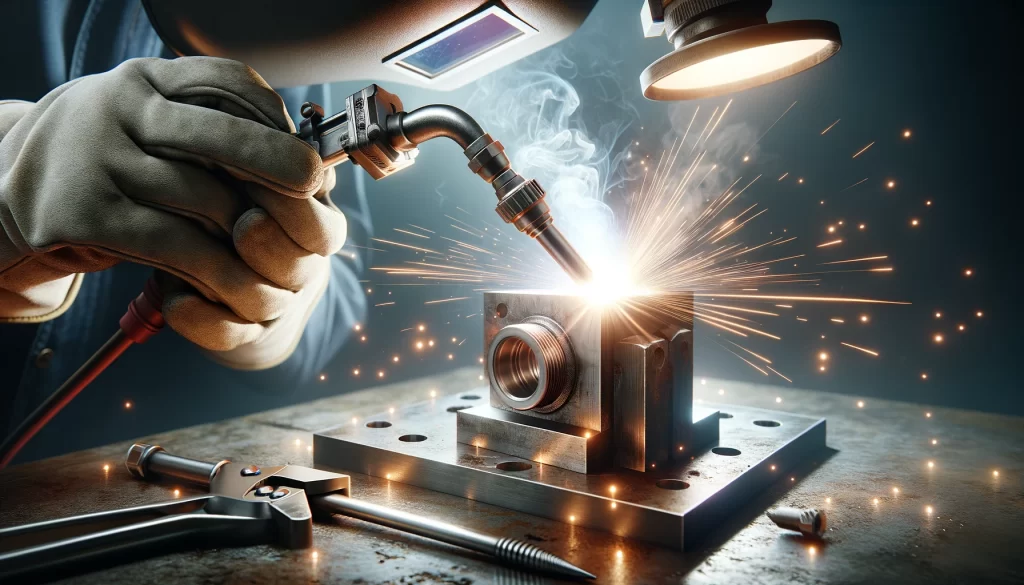Laser welding is a technique used for mold repair in plastic injection molding when molds develop wear, damage, or other issues over time. The process involves using a laser beam to melt and fuse the material, typically metal, in a controlled manner. Here’s how laser welding is generally applied for mold repair:

- Assessment of Mold Damage:
- Before beginning the repair process, the mold is carefully inspected to identify areas of damage, wear, or other issues. This assessment helps determine the extent of the repair required.
- Surface Preparation:
- The damaged area is prepared for welding by cleaning and removing any contaminants, oxides, or debris. Proper surface preparation is crucial for a successful weld.
- Selection of Laser Welding Parameters:
- Laser welding parameters, such as power, duration, and focal point, are carefully selected based on the type of material being welded, the thickness of the mold, and the specific requirements of the repair.
- Laser Welding Process:
- The laser beam is precisely directed to the damaged area, creating a localized melt pool. The high-energy laser beam rapidly heats the material, allowing it to fuse with the existing mold surface.
- Additive Welding:
- In some cases, additional material, often in the form of wire or powder, is added to the weld zone to build up material and restore the original geometry of the mold. This process is known as additive laser welding.
- Controlled Cooling:
- After the welding process, controlled cooling is essential to prevent the formation of undesirable microstructures and to ensure that the repaired area retains the necessary hardness and strength.
- Post-Welding Machining:
- Depending on the precision required, post-welding machining may be performed to achieve the final dimensions and surface finish. This step helps ensure that the repaired mold meets the necessary specifications.
- Quality Inspection:
- The repaired mold undergoes a thorough inspection to verify the success of the repair. This may include dimensional checks, non-destructive testing, and other quality control measures.
Laser welding for mold repair offers several advantages, including:
- Precision: Laser welding allows for precise control over the heat-affected zone, minimizing the risk of distortion and preserving the original mold geometry.
- Localized Repair: The process is localized, meaning only the damaged area is affected, reducing the need for extensive rework and preserving the unaffected portions of the mold.
- Reduced Heat Input: The focused nature of the laser beam minimizes heat input, which can be critical for preventing thermal distortion in precision molds.
- Versatility: Laser welding can be used on a variety of mold materials, including tool steels and other metals commonly used in mold manufacturing.
Laser welding is a valuable tool in mold maintenance, allowing manufacturers to extend the lifespan of molds and minimize downtime in production.

